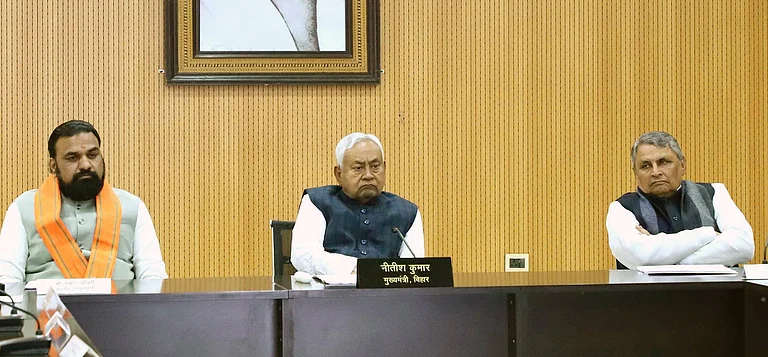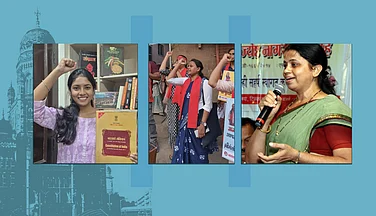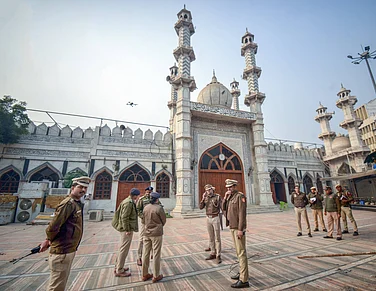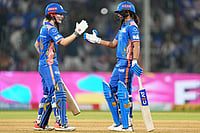In the run-up to the 2015 Bihar assembly elections, when for the first time Nitish Kumar was fighting without his traditional ally Bharatiya Janata Party (BJP), Prime Minister Narendra Modi said that the party made a big sacrifice in making Nitish Chief Minister in 2005. Soon after, the senior Janata Dal-United (JD-U) leaders jumped on the bandwagon saying that it was Nitish’s popularity that forced BJP to elect him. It is not clear whether it was Nitish’s popularity or the anti-incumbency against Rashtriya Janata Dal (RJD) that catapulted them to power — with time Indian politics has learnt that whatever it takes, Nitish will have his way.
The latest decision of the Bihar CM to again leave the ‘Mahagathbandhan’ before the Lok Sabha elections not only questions the ideological position of JD (U), rather it seeks to understand whether ideology in politics exists at all anymore. To understand the journey of JD (U), one may trace back the history from the days of Janata Dal when Lalu Prasad Yadav and Nitish used to be close friends and proponents of social justice politics.
In 1988, VP Singh founded Janata Dal (JD) merging Janata Party and two smaller parties who were part of the United Front. The social justice politics of Singh and the undivided JD led to the implementation of the Mandal Commission’s report recommending quotas for the other backward classes (OBCs) and the emergence of a new era in Indian politics. As most of the parties that came out of the JP Movement in the 1970s had several factions, JD was no different. In 1994, citing differences in opinion, Nitish and George Fernandes left JD and founded the Samata party. Another faction of JD under the leadership of Lalu became RJD in 1997.
Such turmoil in JD’s politics didn’t end with Lalu and Nitish’s departure. In 1999, it became a matter of ideology when one section of JD led by HD Deve Gowda decided to oppose the decision of the Sharad Yadav-led faction to join the National Democratic Alliance (NDA) government. To differentiate himself from the alleged non-secular and communalised ideology of Yadav-led faction, Gowda founded his party and named it JD-Secular (JD-S). The rest of the JD was then called JD (U) or Janata Dal (United).
This was the first ideological struggle within Janata Dal when the party was split on the grounds of their different perceptions of secularism. However, Yadav needed more big names with him to form a formidable coalition. In 2003, he found the most suitable bedfellows in Fernandes and Nitish’s Samata Party. It was merged with the Yadav faction. JD (U) was reconstituted by making Fernandes the president and Yadav the head of the Parliamentary Board. The emergence of Nitish as the central figure was still a couple of years away.
In 2005, JD (U) became the second-largest party in Bihar after RJD. However, as RJD failed to form the government, the state went again to polls giving the party a commendable victory with 88 seats. JD (U) formed the government with the support of the BJP and Nitish became the CM.
It was definitely a determining moment for both the BJP and JD (U). Almost after 10 years of struggle, they were able to replace the RJD. And hence, neither of them wanted to take any chances. This is one of the major reasons, say political analysts, that despite his reservations about the alleged communal politics of BJP, Nitish preferred to hold their hands.
Notably, the foundational ethos of JD (U) stems from the debate over joining an apparently non-secular front back in 1999, Nitish tried to maintain his secular credentials throughout. Later, it even became a matter of campaign for the BJP against JD (U) and its ideology.
On August 24, 2005, while addressing a debate on the reservations of Dalit Christians and Dalit Muslims in Lok Sabha, Nitisg said, “This remains an issue in Muslim and Christian communities. The castes which are considered scheduled caste (SC) among Hindus, there are similar castes in Muslim communities who do not receive the benefits of scheduled caste. This is unjust. I want to openly say that the Dalit castes among Muslim communities should be included among scheduled castes. This is an issue that must be resolved.”
Interestingly, invoking the speech of Nitish in electoral campaign of the 2015 assembly elections, PM Modi said that he was trying to steal away reservations from marginalised communities — the SC, ST, and OBC Hindus. “Nitish Kumar had made his intentions clear way back on August 24, 2005. They lost cool when I alleged that they want to steal away 5 per cent of reservation from the quota given to SCs/STs/OBCs and EBCs and give it to a particular community,” the PM fumed.
Media reports suggest that within a few months of Nitish taking charge in 2005, some BJP leaders accused him of running the government in an autocratic manner. However, in a meeting of NDA allies when Nitish was charged, he offered to tender his resignation. BJP knowing fully well that it wouldn’t be able to afford the loss immediately backstepped.
It was just a few months before the 2010 assembly elections that Nitish reportedly started showing his antipathy towards Modi when he came to attend the BJP’s national executive meeting in Patna. By this time, Nitish had made some impact on Lalu’s core Muslim vote bank and didn’t want to lose it just by showing up with him.
The results of the 2010 assembly polls where Nitish got 115 seats and BJP 91 further strengthened his opposition to Modi and in 2013 he broke away as the latter was chosen as the prime ministerial candidate of the BJP-led NDA.
In 2014, though Kumar paid a huge cost and his tally in Lok Sabha was reduced to just two in front of a sweeping Modi wave, he again made his way in the 2015 assembly elections by forming the Grand Alliance with RJD and Congress. This time, he led the Grand Alliance to an unprecedented victory with 178 seats against BJP’s 53.
This transition of Nitish’s JD (U) from one alliance to the other depending on the winnability, comes along with his assertion of supremacy within the party. Senior leader Sharad Yadav was the president of the party until 2016, his growing relationship with Lalu Prasad irked Nitish and he himself took the presidency. Later, he deputed Lalan Singh and recently removed him as well on almost similar ground — the relationship with RJD.
The winnability factor dominated the political career of Kumar so much that he hired Prashant Kishore’s electoral consultancy agency I-PAC to get his fortune back in 2015 — just after a year he left his chief ministership and broke away from NDA. The immediate effect of the 2014 Modi wave was dusted down in 2015 and Kishore got him what he wanted. He included the electoral strategist in the team of his close aides, sometimes even annoying the senior leaders. In 2018, Kishore was anointed as the Vice President of the party.
So, the ideology of social justice politics for Nitish whereas sustains in policies, it cannot precede his efforts to dodge any prospect of being unseated. As the fate of the INDIA bloc is hanging on the brink, Nitish thought it as the most suitable time to jump the boat. In this context, the apparent failure of the caste census plank in the latest set of assembly elections, the developing distance between RJD and JD (U), and the lack of consensus on Nitish’s convenorship also paved the way for such political change, think political analysts.



























